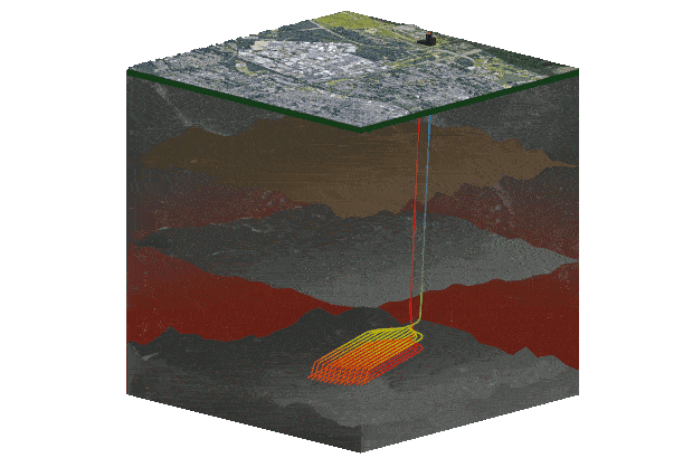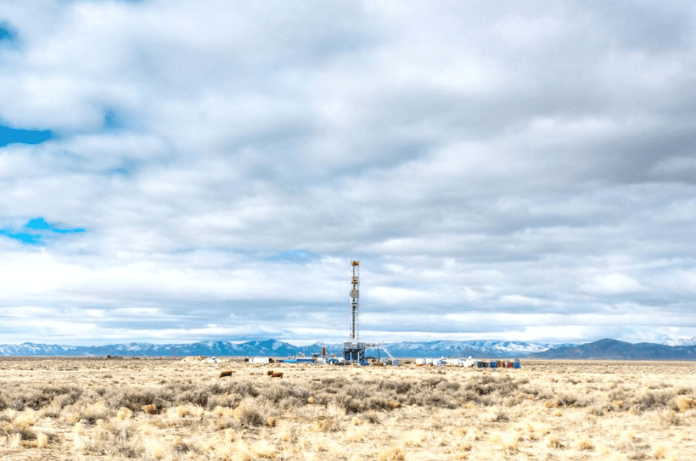Recent deals in nuclear energy by tech giants like Amazon, Microsoft, and Google have made headlines globally. Yet, these powerhouses, along with Meta are also making significant strides in another low-carbon energy frontier: next-generation geothermal.
Lauren Boyd, a geologist heading the Geothermal Technologies Office at the US Department of Energy (DoE), states that these investments signal that geothermal technology is “on the cusp” of broad commercial viability. This shift not only highlights the expanding interest in renewable resources but also points to the potential of geothermal as a sustainable energy solution.
Fervo Energy’s Game-Changer in Utah
On October 17, the US government approved an expansion of Fervo Energy’s geothermal plant in Beaver County, Utah, providing a significant boost to the Texas-based start-up. The plant has the potential to reach 2,000 MW (MegaWatt) of capacity equal to that of two large nuclear reactors. Though achieving this milestone will take time, Fervo already has 400 MW of capacity in progress and is expected to supply constant power to Google’s data centers and other clients by 2028.
Similarly, in August, Sage Geosystems announced a strategic partnership with Meta to deliver up to 150 MW of geothermal energy to Meta’s data centers by 2027. These efforts are setting the stage for geothermal to play a substantial role in powering the ever-expanding digital infrastructure.
Rethinking Geothermal: Beyond Hot Springs
Companies like Sage and Fervo are at the forefront of harnessing Earth’s internal heat in innovative ways. Unlike conventional geothermal, which depends on natural hot springs, these advanced projects create their own reservoirs. This process, known as “Enhanced Geothermal Systems” (EGS), involves drilling boreholes several kilometers deep, where temperatures reach around 200 °C, and injecting water and sand to fracture the rock. This increases permeability and allows hot water to be extracted continuously, transforming geothermal energy from a niche solution to a potential mainstay in the global energy market.

While EGS has been attempted since the 1970s with limited success, recent advances in oil and gas industry techniques have significantly improved its feasibility. Lauren Boyd credits the DoE’s Utah FORGE project for driving innovation and halving drilling costs. These advancements showcase the importance of interdisciplinary knowledge and adapting oil and gas expertise for clean energy technologies.
Horizontal Drilling: The Breakthrough Technique
Joseph Moore, a geologist at the University of Utah and head of Utah FORGE, emphasizes that horizontal drilling has been crucial for EGS’s success, as vertical cracks are common in rock formations. Horizontal boreholes intersect more fractures, allowing for greater water flow and energy extraction. This innovation not only increases efficiency but also demonstrates that leveraging proven drilling techniques can expedite the deployment of geothermal projects. Fervo’s senior geologist Emma McConville notes that the company’s Utah plant has proven that EGS can work using standard industry tools, enabling rapid geothermal deployment that aligns with the growing demand for continuous, green power.
Leveraging Oil and Gas Expertise
One advantage for the next-gen geothermal industry is its overlap with the oil and gas sector. The workforce skilled in drilling and the equipment used — such as 30-meter derricks — are easily adaptable for geothermal projects. McConville highlights, “Keeping those rigs running for carbon-free energy is one of the most rewarding aspects of this industry.” This cross-industry collaboration is vital for scaling up production and bringing more carbon-neutral energy solutions to the market at a faster rate.
Minimizing Seismic Risks
One of the challenges facing EGS has been the risk of induced seismicity due to fracking, which caused notable incidents in Basel, Switzerland, and Pohang, South Korea. Companies like Fervo and Utah FORGE adhere to DoE guidelines and monitor sites with seismographs to minimize risks. McConville notes that any seismic activity is typically minor, with magnitudes under 2, ensuring no noticeable impact. This proactive approach helps build public trust and solidifies geothermal’s position as a reliable energy source.
Eavor, a Canadian company, takes an even more cautious approach by using a system it calls ‘advanced’ geothermal, which avoids fracking. Their closed-loop method involves magnetic guidance systems to create horizontal, interlinked boreholes that form circuits underground. This approach allows heat transfer without direct contact between water and rock. “There’s no GPS when you are four and a half kilometers underground,” says Matt Toews, Eavor’s chief technology officer, highlighting the technological precision required for such projects.
Geothermal’s Market Potential and Costs
Drilling at such depths is costly, with each borehole potentially costing millions. While expenses are projected to decrease as technology matures, geothermal energy remains pricier than many other sources. However, it offers continuous availability, making it an excellent complement to variable renewable sources like solar and wind. Energy systems researcher Wilson Ricks from Princeton University suggests that geothermal could compete with nuclear, biomass, and hydrogen in filling energy gaps.
Early this year, a study published in Nature Energy by Ricks and Fervo’s co-founder Jack Norbeck found that, under certain conditions, geothermal could be more cost-effective than nuclear power in the western United States. However, the study’s key assumption was that geothermal plants could adjust electricity output based on demand without suffering wear and tear, a test that upcoming facilities will face.
A Future in Balance
As next-generation geothermal gains momentum, it promises to reshape energy markets with its potential for around-the-clock, low-carbon power. While challenges remain, the convergence of technology, innovation, and industry expertise positions geothermal as a vital component of the future energy landscape.

